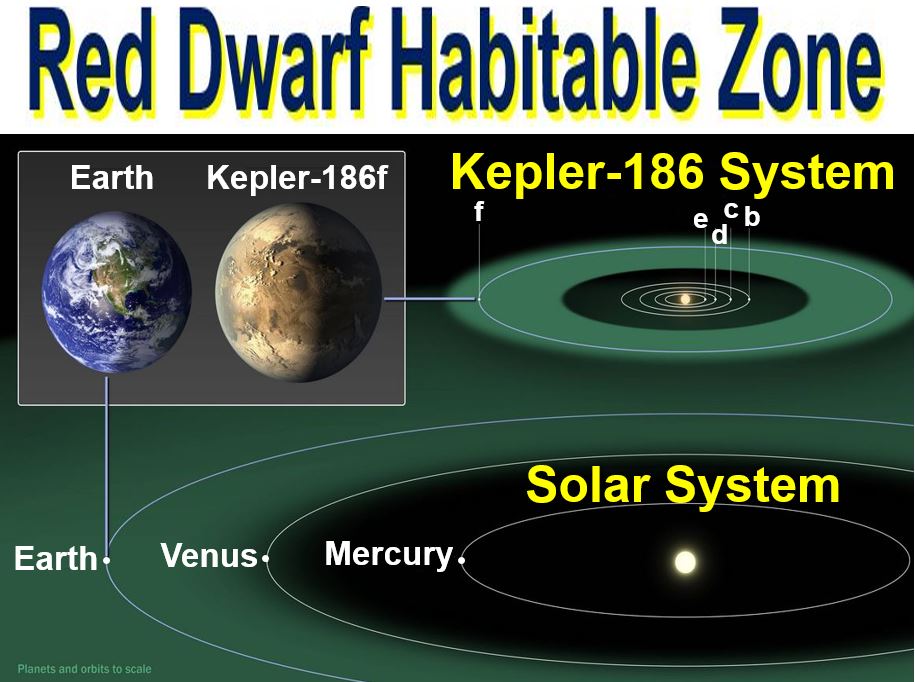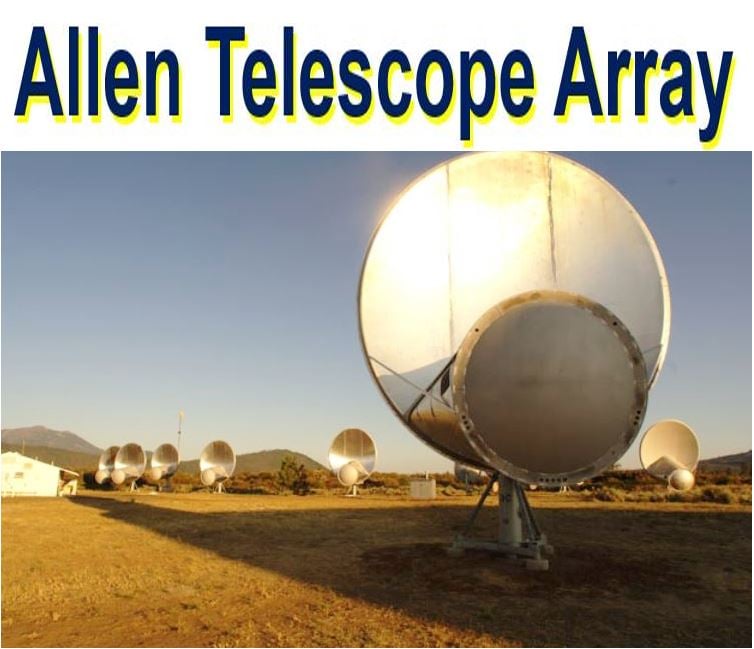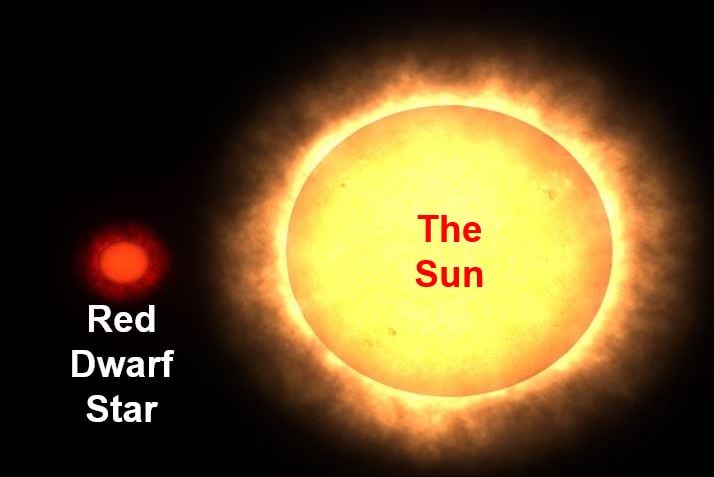The SETI Institute says it has expanded its search for intelligent aliens to include checking for signals from about 20,000 red dwarf stars, which are smaller than our Sun and relatively cool. As they burn their fuel very slowly, red dwarf stars live for a very long time.
The SETI Institute’s main objective is to search for intelligent life in the Universe. SETI stands for Search for ExtraTerrestrial Intelligence. The SETI Institute is based at Mountain View in California.
The Institute says that over the course of the next twenty-four months, it will carefully scrutinize the vicinities of twenty thousand red dwarf stars.
 Last year, NASA’s Kepler space telescope spotted the first Earth-sized planet – Kepler-186f – in orbit around a red dwarf star in the so-called Goldilocks zone. The SETI institute plans to search for signals from intelligent aliens from 20,000 red dwarf star systems. (Image: nasa.gov)
Last year, NASA’s Kepler space telescope spotted the first Earth-sized planet – Kepler-186f – in orbit around a red dwarf star in the so-called Goldilocks zone. The SETI institute plans to search for signals from intelligent aliens from 20,000 red dwarf star systems. (Image: nasa.gov)
Red dwarfs ignored until now
Jon Richards, SETI’s Senior Software Engineer, said regarding red dwarf stars:
“Red dwarfs – the dim bulbs of the cosmos – have received scant attention by SETI scientists in the past. That’s because researchers made the seemingly reasonable assumption that other intelligent species would be on planets orbiting stars similar to the Sun.”
This conservative assessment was further boosted by the argument that there would be very few planets in a red dwarf star’s habitable zone, also called its Goldilocks zone, because that zone would be considerably narrower than for brighter stars like our Sun.
Scientists also thought that any planet within the Goldilocks zone would be orbiting so close to its star that it would rapidly become tidally locked, i.e. one hemisphere would be perpetually facing its parent star.
 The Allen Telescope Array will search for signals from red dwarf star systems. (Image: seti.org)
The Allen Telescope Array will search for signals from red dwarf star systems. (Image: seti.org)
They assumed that a tidally-locked planet would not be able to contain life as we know it, because its star-facing side would be far too hot, while its other hemisphere would be too cold.
Planets might have conditions for life
However, recent studies suggest that if these worlds have atmospheres and oceans, heat would be transported from the bright side to the dark, and a sizable fraction of the planet would be habitable.
Additionally, exoplanet data indicate that between one-sixth and one-half of red dwarf stars have planets within their habitable zones.
Dr. Seth Shostak, SETI’s Senior Astronomer, said:
“Significantly, three-fourths of all stars are red dwarfs. That means that if you observe a finite set of them – say the nearest twenty thousand – then on average they will be at only half the distance of the nearest twenty thousand Sun-like stars.”
Perhaps older is better
Also, red dwarf stars have been around for a very long time. Scientists say that every red dwarf star that was born since the Big Bang is still shining today. On average, they are billions of years older than Sun-like stars.
 Red dwarfs range in mass from a low of 0.075 solar masses to about half a solar mass (half the mass of our Sun). (Image: nasa.gov)
Red dwarfs range in mass from a low of 0.075 solar masses to about half a solar mass (half the mass of our Sun). (Image: nasa.gov)
Life takes a very long time to take hold, probably billions of years. It takes even longer for that life to evolve to a point where there are intelligent creatures. Smart extraterrestrials are more likely to exist in environments that have been around for a long time.
Dr. Shostak said:
“This may be one instance in which older is better. Older solar systems have had more time to produce intelligent species.”
The search is being carried out on the SETI Institute’s Allen Telescope Array, formerly known as the One Hectare Telescope, situated at the Hat Creek Radio Observatory, 290 miles (470 km) northeast of San Francisco, California. This grouping of forty-two antennas can observe three stars at the same time.
Director at the Center for SETI Research, Dr. Gerry Harp, said:
“We’ll scrutinize targeted systems over several frequency bands between 1 and 10 GHz. Roughly half of those bands will be at so-called ‘magic frequencies’ – places on the radio dial that are directly related to basic mathematical constants.”
“It’s reasonable to speculate that extraterrestrials trying to attract attention might generate signals at such special frequencies.”
The new red dwarf survey is estimated to take two years to complete. Targets are being selected from a list of about 70,000 red dwarfs compiled by Andrew West, an astronomer at Boston University. The search will also include relevant new data from NASA’s TESS (Transiting Exoplanet Survey Satellite) project, which will examine nearby stars, including red dwarfs, for exoplanets.
Video – Welcome to SETI talks
Want to learn more about the Universe? Watch this video.

